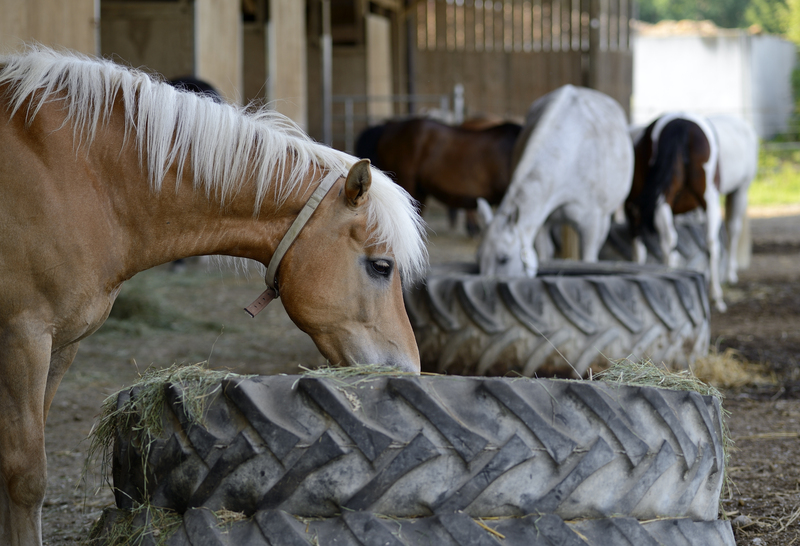The Plastics You Should Avoid for Cleaner Living
Plastics have infiltrated nearly every aspect of our lives, from food packaging to household goods, toys, and even our clothing. While plastics offer undeniable convenience, they also pose significant risks to our health and to the environment. If you're striving for a cleaner, healthier lifestyle, it's crucial to be aware of the types of plastics you should avoid. In this comprehensive guide, we'll delve into the most problematic plastics, explain why they're harmful, and provide actionable alternatives for safer, sustainable living.
Why Are Certain Plastics Harmful?
Not all plastics are created equal. Many of them contain hazardous chemicals that can leach into your food, water, and even the air you breathe. Bisphenol A (BPA), phthalates, and other toxins found in plastics have been linked to hormonal disruption, developmental issues, and even cancer. Additionally, these plastics contribute to pollution, harm wildlife, and accumulate in landfills and oceans for centuries.
Understanding which plastics to steer clear of is the first step toward cleaner living--both for your health and for our planet.

Understanding Plastic Identification Codes
Plastics are categorized using identification codes (usually numbers within a recycling triangle) called Resin Identification Codes. These codes range from 1 to 7 and reveal the type of plastic used. By learning what each number means, you can make more informed and responsible choices.
- #1 PET or PETE (Polyethylene Terephthalate): Often used for water and soda bottles, juice containers, etc.
- #2 HDPE (High-Density Polyethylene): Used for milk jugs, detergent bottles, and some plastic bags.
- #3 PVC (Polyvinyl Chloride): Found in cling wraps, some food containers, and plumbing pipes.
- #4 LDPE (Low-Density Polyethylene): Used in grocery bags, bread bags, and some food wraps.
- #5 PP (Polypropylene): Often found in yogurt, syrup, and medicine containers.
- #6 PS (Polystyrene): Styrofoam cups, takeout containers, and egg cartons.
- #7 Other (Miscellaneous): Includes polycarbonate and "bioplastics"--often containing BPA.
The Most Hazardous Plastics: Types to Avoid
#3 PVC (Polyvinyl Chloride) - The Toxic Plastic
Why avoid PVC? PVC is notorious for containing dangerous additives like phthalates and lead, which can leach out over time. This plastic is particularly hazardous when used in food packaging or children's toys. Its production and disposal also release dioxins, which are highly toxic, persistent environmental pollutants.
- Commonly found in: Food packaging, cling wrap, pipes, shower curtains, and children's toys.
- Health risks: Hormone disruption, developmental issues in children, and increased cancer risk.
- Eco-impact: Production releases toxic dioxins and pollutants that persist in the environment.
#6 Polystyrene (Styrofoam) - A Pollution Nightmare
Polystyrene is best known as Styrofoam. It's lightweight, cheap, and excellent at insulation, making it a favorite for takeout containers and coffee cups. But it's also one of the worst plastics for environmental and human health.
- Commonly found in: Disposable coffee cups, takeout food containers, egg cartons, and packing peanuts.
- Health risks: Contains styrene, a suspected carcinogen that can leach into food and drinks, especially when heated.
- Eco-impact: Near impossible to recycle; it breaks into tiny particles that pollute land and waterways, harming wildlife.
#7 Polycarbonate and "Other" Plastics - The BPA Problem
#7 plastics are a mixed bag--often including polycarbonate, which is widely known for containing Bisphenol A (BPA). BPA mimics estrogen in the body and has been linked to numerous health problems.
- Commonly found in: Water cooler bottles, baby bottles, sports equipment, food containers, some reusable water bottles, and linings of food cans.
- Health risks: BPA disrupts hormones, impacts reproduction, may contribute to cancer, and affects brain development in fetuses and children.
- Eco-impact: Difficult to recycle and often ends up in landfills or incinerators.
Other Plastics To Be Cautious With
- #1 PET or PETE: While generally considered safe for single use, PET can leach antimony, a toxic substance, especially when bottles are exposed to heat or reused multiple times.
- #4 LDPE and #5 PP: Relatively safer, but always check for specific uses and whether plastics contain additives or softeners that may pose risks.
The Health Risks of Hazardous Plastics
It's important to understand that everyday exposure to toxic plastics may have cumulative, long-term effects. Frequent contact with food packaging, beverages, toys, and household items made from harmful plastics can contribute to the following health problems:
- Endocrine disruption: Chemicals like BPA and phthalates mimic or block hormones, affecting fertility, brain development, metabolism, and even weight gain.
- Developmental delays: Children are especially vulnerable to toxins leaching from plastic toys and bottles, which can disrupt growth and cognitive development.
- Cancer risk: Some chemicals found in plastics, such as styrene and dioxins, are recognized carcinogens or suspected to contribute to cancer growth.
- Respiratory issues: Burning or heating certain plastics releases fumes that can cause respiratory irritation or worsen conditions like asthma.
Reducing your exposure to these plastics can significantly lower your risk of these health issues.
Environmental Impact: Why Avoiding Troubling Plastics Matters
Plastic pollution is more than unsightly litter on our beaches and streets--it has devastating, far-reaching consequences. The most dangerous plastics take centuries to break down, accumulating in landfills and oceans, where they damage ecosystems and wildlife.
- Microplastics: Plastics like Styrofoam break into tiny pieces known as microplastics, which infiltrate soils and waterways. These microplastics are now found everywhere, from mountain peaks to deep-sea floors, and even in our bodies.
- Marine life: Animals ingest or become entangled in plastic debris, leading to injury or death. Chemicals from plastics also concentrate in the marine food chain, threatening entire ecosystems.
- Resource-intensive production: Manufacturing plastics creates greenhouse gases, releases toxins, and depletes natural resources.
How to Identify and Avoid Dangerous Plastics
Reading the Recycling Triangle
Most plastic products have a triangle with a number (1-7) on the bottom. Train yourself to check these symbols before purchasing or using plastic items. Make it a habit to avoid #3, #6, and #7 plastics unless specifically labeled as BPA-free or made from safe alternatives.
Safe Alternatives to Hazardous Plastics
For cleaner living and a healthier planet, choose these safer plastics or, even better, switch to non-plastic materials altogether.
- #2 HDPE and #5 PP: Considered safer for food contact; HDPE is used in milk bottles and PP in yogurt and baby food containers. Even so, limit their usage where possible.
- Glass: Best for food and beverage storage as it doesn't leach chemicals and is fully recyclable.
- Stainless steel: Excellent for reusable water bottles, lunch boxes, and straws.
- Silicone: Heat-resistant and safe for cooking utensils and bakeware but ensure products are food-grade and BPA-free.
- Bamboo or wood: Great for utensils, plates, and cutting boards. Look for sustainably harvested options.
Tips for Reducing Plastic Exposure
- Use glass or stainless steel containers for storing food and beverages, especially hot or acidic items.
- Avoid heating food in plastic containers, even if they're labeled "microwave safe."
- Say no to single-use plastics like straws, cutlery, cups, and grocery bags--invest in reusable alternatives.
- Check product labels for BPA, phthalates, and other dangerous additives. Opt for products labeled "BPA-free" or "phthalate-free."
- Support companies and retailers that use conscious packaging and eco-friendly materials.
- Encourage your community to ban or reduce the use of hazardous plastics, especially in schools, workplaces, and public spaces.
The Special Risk to Children: Plastics in Toys and Baby Products
Infants and young children are particularly susceptible to toxins from certain plastics. Soft plastics in toys, teethers, and baby bottles may contain phthalates, BPA, or PVC that leach out via chewing or heating.
- Choose natural materials--opt for wooden toys, glass bottles, and silicone pacifiers that are clearly labeled as toxin-free.
- Look for safety certifications like CPSIA or EU EN-71 standards for toys and baby products.
Avoiding hazardous plastics in these early years is vital for healthy development.

Frequently Asked Questions About Avoiding Problematic Plastics
Is all plastic harmful?
No, not all plastics are equally harmful. However, plastics labeled with codes #3 (PVC), #6 (Polystyrene), and #7 (Polycarbonate/BPA) are among the most hazardous and should be avoided whenever possible.
Can I reuse plastic water bottles?
Most disposable water bottles are made of PET (#1) plastic, designed for single use. Repeated washing and exposure to heat can increase the risk of chemical leaching. It's best to avoid reusing them and switch to glass or stainless steel bottles.
How can I tell if a product contains BPA or phthalates?
Check packaging and product details for labels like "BPA-free" or "phthalate-free." If in doubt, choose alternatives like glass, stainless steel, or certified food-grade silicone. For toys and baby products, look for independent safety certification.
Is "bioplastic" safer?
Bioplastics can be less toxic and more sustainable, but there's wide variation. Some "bio" plastics are still coded as #7 and may contain BPA or other additives. Research the brand and composition carefully before use.
Conclusion: Cleaner Living Means Avoiding Problematic Plastics
Cleaner living is within reach when you learn which plastics to avoid and prioritize safer, sustainable choices. Begin by steering clear of PVC (#3), Polystyrene (#6), and BPA-containing plastics (#7). Instead, prioritize glass, stainless steel, safer plastics like HDPE and PP, and natural materials. A commitment to avoiding the worst plastics not only protects your own health but also helps to preserve the planet for future generations.
Take simple steps today for a cleaner, healthier tomorrow:
- Educate yourself and your family about plastic identification codes and their risks.
- Reduce reliance on single-use plastics and encourage your community to do the same.
- Choose reusable, toxin-free alternatives whenever possible.
Together, with mindful choices, we can minimize our exposure to dangerous plastics and cultivate a cleaner, greener lifestyle.